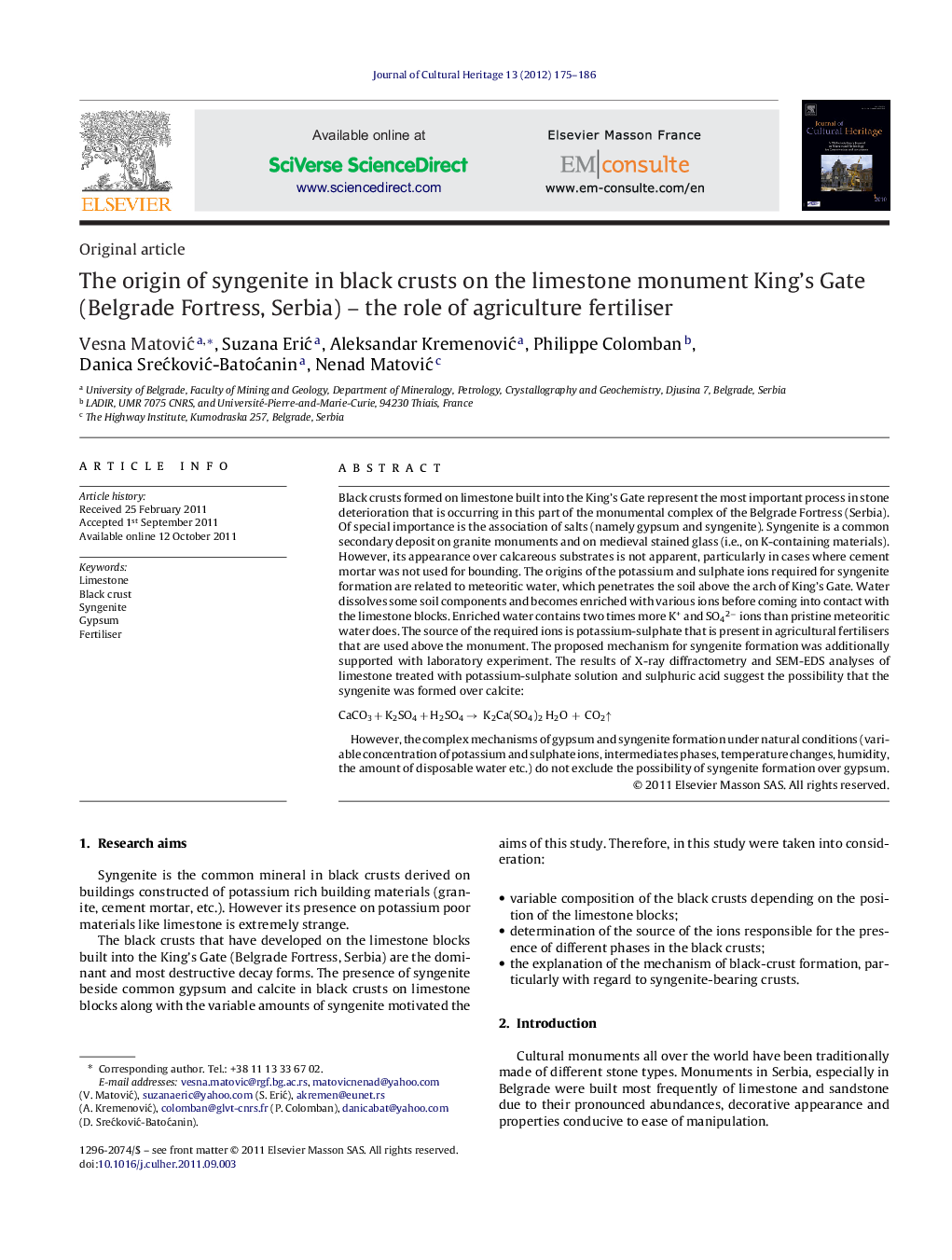| Article ID | Journal | Published Year | Pages | File Type |
|---|---|---|---|---|
| 1038426 | Journal of Cultural Heritage | 2012 | 12 Pages |
Black crusts formed on limestone built into the King's Gate represent the most important process in stone deterioration that is occurring in this part of the monumental complex of the Belgrade Fortress (Serbia). Of special importance is the association of salts (namely gypsum and syngenite). Syngenite is a common secondary deposit on granite monuments and on medieval stained glass (i.e., on K-containing materials). However, its appearance over calcareous substrates is not apparent, particularly in cases where cement mortar was not used for bounding. The origins of the potassium and sulphate ions required for syngenite formation are related to meteoritic water, which penetrates the soil above the arch of King's Gate. Water dissolves some soil components and becomes enriched with various ions before coming into contact with the limestone blocks. Enriched water contains two times more K+ and SO42− ions than pristine meteoritic water does. The source of the required ions is potassium-sulphate that is present in agricultural fertilisers that are used above the monument. The proposed mechanism for syngenite formation was additionally supported with laboratory experiment. The results of X-ray diffractometry and SEM-EDS analyses of limestone treated with potassium-sulphate solution and sulphuric acid suggest the possibility that the syngenite was formed over calcite:CaCO3 + K2SO4 + H2SO4 → K2Ca(SO4)2 H2O + CO2↑However, the complex mechanisms of gypsum and syngenite formation under natural conditions (variable concentration of potassium and sulphate ions, intermediates phases, temperature changes, humidity, the amount of disposable water etc.) do not exclude the possibility of syngenite formation over gypsum.
